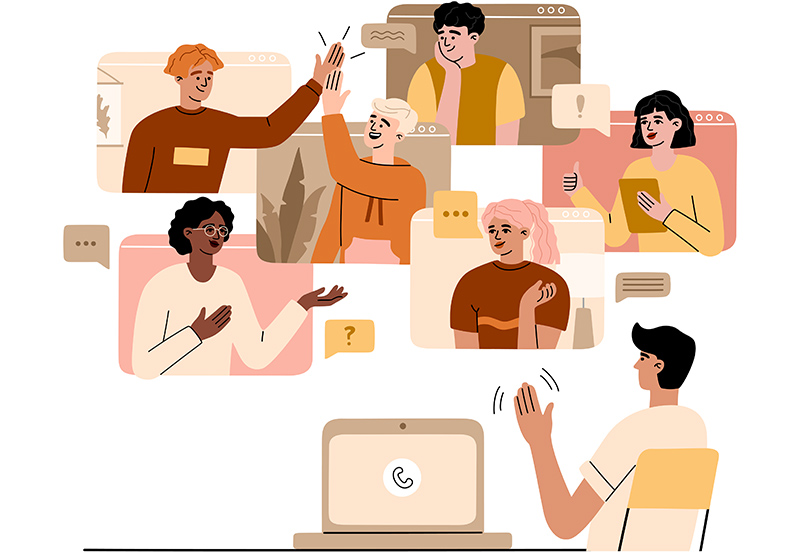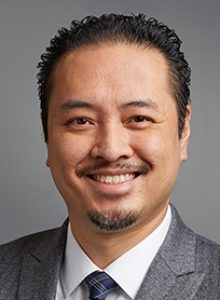Five years have passed since I last wrote about our social recreation group CASY Sparks, previously known as Project CASY (Community Autism Socials at Yale) in the Spring 2016 Issue of Autism Spectrum News.
CASY began to flourish in 2016 with the establishment of the Daniel Jordan Fiddle Foundation Adult Autism Research Fund whose endowment continues to support this effort. At that time membership was less than 200 with the group being only two years old (founded April 2014). In 2021, the group turned seven years old, and I’m pleased to say we are stronger than ever with total group membership approaching 1,500. Ironically, much of our growth occurred during the pandemic, and how we grew cannot be reflected alone in group membership numbers. Driven by necessity, we made a major pivot from local in-person meetings to global virtual meetings using Zoom videoconferencing. We re-invented ourselves as “CASY Sparks” which became a borderless community focused on discussing topics that are interesting or important to autism and autistic communities, initially within the United States. While we continue to value social recreation, our community rapidly developed globally in response to the myriad meetings we could offer online. At the height of the pandemic, multiple groups were offered most days of the week. With the rapid adoption of certain technology, we were able to improve lives during a period when the world was suffering both medical and psychological consequences of the COVID-19 pandemic. Much to our surprise, we were interacting much more than we ever had been prior to the pandemic.

To understand how this works, it is important to discuss some limitations of in-person meetings. It is worth emphasizing that not everyone likes face-to-face group interaction. While this format has been the gold standard since the beginning of civilization, this is not necessarily the case for 100% of the population. Part of being inclusive and mindful of neurodiversity is having the awareness that other formats of human interaction are also valuable. By eliminating many logistical barriers (i.e., transportation, time constraints, coordination, etc.), videoconferencing technology has allowed participation with minimal disruption to routine and daily life. This may partially explain the popularity of working from home. Less obvious benefits exist in the realm of psychological, communication, and sensory needs. For example, videoconferencing can help mitigate the crippling anxiety of being in a group. There is rarely direct eye contact since most are looking at their monitors and not into their cameras. Furthermore, attendees can turn their cameras on or off as well as mute themselves. Volume can be adjusted on the computer and different screen views are available. It is easy to discreetly leave an online meeting without disruption and many groups allow people to join in without having cameras turned on or evening uttering a single word during the meeting. Technology offers more options for the participant, and they can adjust various parameters to fit their preferences and needs. While different groups have different rules, CASY Sparks allows a great degree of flexibility, and we welcome people to participate how they prefer.
Perhaps the greatest benefit of technology is helping like-minded people find one another. This has always been an ongoing challenge for in-person groups prior to the pandemic. Historically, these events can attract large numbers of participants, depending on the activity. With larger groups comes greater diversity which can be a great asset. However, when there are large differences in social communication styles, interests, sensitivities, needs, and other preferences; establishing relationships can be extremely difficult and this is consistent with our observations over years of first-hand experience. More specifically, any connections made tend to be minimal or superficial. They may be restricted to the event with neither carryover outside the event nor subsequent events, even across the same group. On the other hand, there are some events that have too few participants to form a meaningful group. This is more common in certain discussion-based groups and defeats the purpose of sharing diverse perspectives. With too many negative experiences, people may prematurely abandon the approach and will not try again even if there are significant improvements over time.
There are many possible contributors to these observed patterns, but one common denominator is how and how much participants differ from one another. Put simply, if people are too different from one another in certain respects, then it may reduce the likelihood they will connect. This goes far beyond people having different political or religious views and encapsulates more basic social communication needs, preferences, and social pragmatics. If participants adopt similar communication technologies, they can find one another by uniting on their preferred online platforms. This also helps individuals connect around certain interests because the community is no longer local. Leveraging social media permits access to a global community which only increases the likelihood that like-minded people will successfully connect and stay connected.
Like most things in life, there are both risks and benefits, and this is especially true with regard to internet technology. In the words of Nobel Peace Prize Recipient (1921) Christian Lous Lange, “Technology is a useful servant but a dangerous master.” The untoward effect of the internet and social media is a topic of intense discussion and must be used with great caution. Any powerful tool can be as harmful as it is helpful with the difference being the users. We are working hard on the answers on how to fully leverage technology while minimizing risk; however, there are no simple solutions, and these are unlikely to be applied evenly across neurodiverse populations. If our mission is to improve lives, then we have a duty and will never be absolved from trying. While complete solutions are currently unclear, what is abundantly clear is the potential benefits of technology – it is how physical distancing brought us even closer together.
Dr. Roger Jou is a psychiatrist, researcher, and community developer who specializes in autism across the lifespan. He is the principal investigator of several autism clinical studies at Yale School of Medicine. He is also the founder of CASY Sparks and other online groups benefiting autism communities nationwide. Detailed information is available on multiple social media platforms @DrRogerJou or www.meetup.com/ProjectCASY/. He can be reached via email at roger.jou@yale.edu.
The Daniel Jordan Fiddle Foundation is an internationally respected leader in creating, developing, and fostering collaborative partnerships that enhance opportunities for all adults diagnosed with Autism to live productive and fulfilling lives. The Daniel Jordan Fiddle Foundation Adult Autism Endowment Funds established at renowned universities will in perpetuity focus on research, housing, jobs, creative arts, and the health and wellness of individuals and their families. For more information, visit www.djfiddlefoundation.org and follow @fiddleautism on Instagram.





